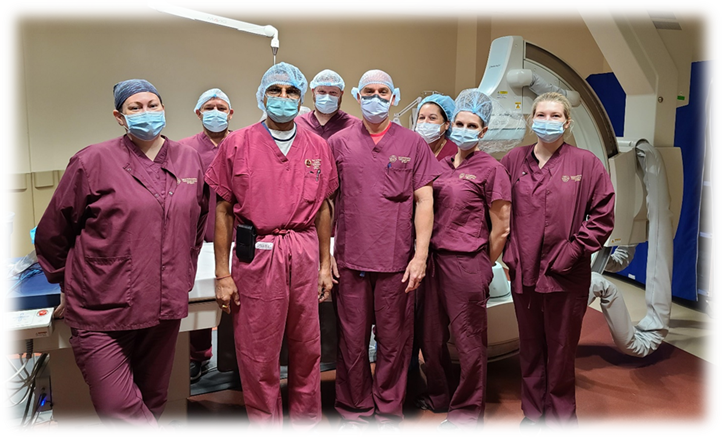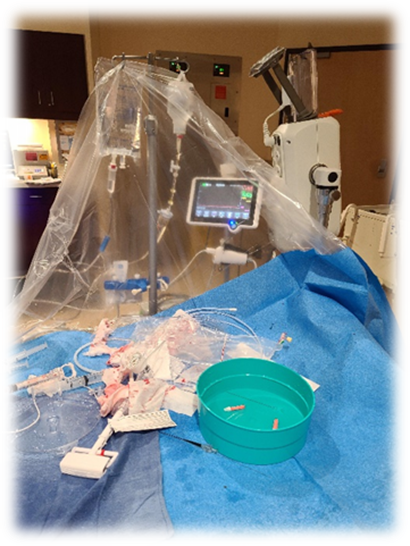CLIENT TESTIMONIAL
Eric A. Osborn, MD, PhD, Division of Cardiovascular Medicine, Beth Israel Deaconess Medical Center, Harvard Medical School, Boston, Massachusetts, USA
Ease of Implementation and Cost-Effective
- Complex PCI-Ready
- One single guidewire for the entire Procedure
- Reliable and adenosine free
Situation
- Number of bed in hospital
- Cath lab staff description:
- 9 Employees
- 16 Physicians
- Yearly PCI activity: ~200 Cardiovascular procedures/year including PCI and peripheral interventions.
- Yearly PCI activity: ~200 Cardiovascular procedures/year including PCI and peripheral interventions.
Background
Within our Ambulatory Surgical Center (ASC) we have a small team dedicated to working in the cath lab. For our facility it is very important to find a reliable, accurate and easy-to-use FFR wire, as well as an economically friendly option to the rising costs of health care, especially to the ASC settings.
Previous Experience
As a facility we evaluated all the pressure guidewires on the market in a head-to-head comparison, including the very latest from the market leader. We looked at the obvious; what is the cost, how does the wire itself performs, can you manipulate it through those tortuous and calcified vessels, how accurate and reliable will the wire and its system be for us and how easy is it for the staff to use. Even though all pressure wire companies tout that their product is the best, and they will all be happy to tell you exactly why their competitors are not nearly as good as they are, we chose to find out for ourselves. We found many of the wires have significant drift, even though they say that they do not. We also found most wires are not easily steerable when navigating those tortuous and calcified vessels, and when you get them here, often we were not being able to work over the wire.
Another important aspect for our staff was the ease of use, we want to be efficient and have a lean approach where we don’t have equipment sitting in corridors with the need to roll it in and out of cases.

Testing the OptoWire™
Given our high expectations and significant frustration with all those devices, we decided to try one more option and trial the OptoWire from OpSens. The implementation was very surprising as it was so intuitive and easy-to-use: no cart around, just an optical unit under the table and out of the way and a display unit providing all the commands and information needed. We then had to test the guidewire performance itself. This wire zeros itself when plugged in, has a table side console (which is very convenient), equalizes with ease, and was so very easy for all our staff to learn and to use efficiently.

Coming to the steerability test, we got another pleasant surprise. Due to the OptoWire concentric design and nitinol core, it is like using a Pro-Water workhorse wire with great torque response and you actually feel as though you have regular guidewire control when accessing even tortuous and calcified vessels.Navigation has never been easier than with this pressure wire. This allows our physicians to save time and money as we can do an entire case, including our PCI’s all over the OptoWire lll, for what we like to call a one-wire PCI. You also have the freedom to disconnect and reconnect the wire from the optical light source in seconds. This allows us to use the wire as a workhorse wire and reconnect in a jiffy to get our pressure measurements. Also, with this system being fiber optic it does not matter if we get the system, or the light source wet. It will always hook up and keep working with no problems. This pressure wire has no drift even when redirected to measure additional vessels during the same setting and that allows us to get an accurate diagnosis the first time, every time.
And if all that freedom was not enough, the OptoWire lll also gives you the freedom of choice between FFR and adenosine-free indices to maximize your efficiency and savings. I have never had to open an additional wire for any reason whatsoever, which anyone who works in a cardiac cath lab knows is rare. As one of my physicians stated, “I do not know why anyone in their right mind would use any other pressure wire.” I would recommend this pressure wire over all competitors with total confidence.
Conclusion
After years of frustration, we have finally found the pressure guidewire for our Ambulatory Surgical Center that meets all our needs: Accurate for our patients, Efficient and Cost-Friendly. It was easy to implement and it makes our staff much happier.

